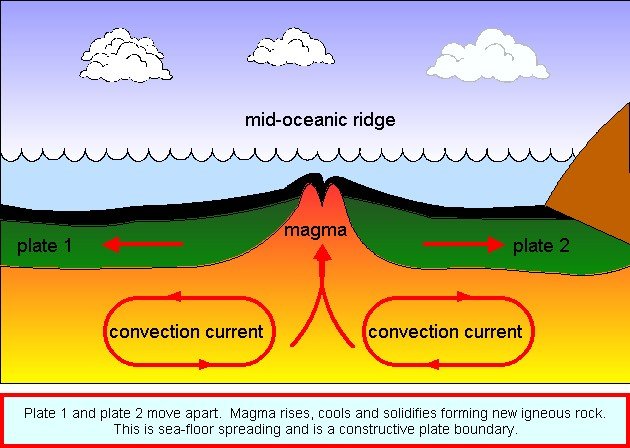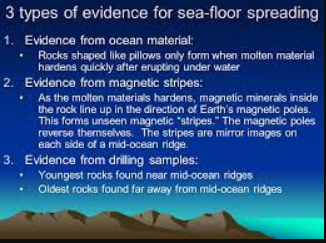Description

Disclaimer: Copyright infringement not intended.
Context
- Seafloor spreading rates have slowed down by roughly 35 per cent globally, according to a study that analysed data from the last 19 million years.
- Growing mountains might be one of the factors driving the slowdown, the analysis found.
About
- Sea-floor spreading is a geologic process. In this at the mid-oceanic ridge where a divergent boundary is causing two plates to move away from one another resulting in spreading of the sea floor.
- As the plates move apart, new material wells up and cools onto the edge of the plates.
- Seafloor spreading was proposed by an American geophysicist, Harry H. Hess in 1960.

Supporting Evidence for Seafloor Spreading
- First, samples of the deep ocean floor show that basaltic oceanic crust and overlying sediment become progressively younger as the mid-ocean ridge is approached, and the sediment cover is thinner near the ridge.
- Second, the rock making up the ocean floor is considerably younger than the continents.
- No samples found are over 200 million years old, as contrasted with maximum ages of over 3 billion years for the continental rocks. This confirms that older ocean crust has been reabsorbed in ocean trench systems.
- Magnetic surveys conducted near the mid-ocean ridge showed elongated patterns of normal and reversed polarity of the ocean floor in bands paralleling the rift and symmetrically distributed as mirror images on either side of it.

Rate of sea floor spreading
- Determining the rate is crucial because seafloor spreading influences sea level and carbon cycle.
- For example, faster rates mean more volcanic activity, which injects greenhouse gases into the atmosphere.
https://www.downtoearth.org.in/news/science-technology/seafloor-spreading-that-creates-crust-slowed-35-growing-mountains-may-be-driving-it-study-82520


















